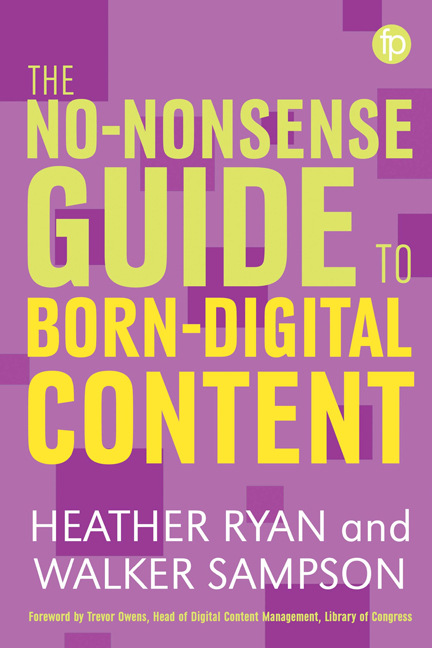Book contents
- Frontmatter
- Contents
- List of figures and tables
- Foreword
- Acknowledgements
- List of abbreviations
- Glossary
- Introduction
- 1 Digital information basics
- 2 Selection
- 3 Acquisition, accessioning and ingest
- 4 Description
- 5 Digital preservation storage and strategies
- 6 Access
- 7 Designing and implementing workflows
- 8 New and emerging areas in born-digital materials
- Conclusion
- References
- Appendix A Resources
- Appendix B Basic Unix command line prompts
- Index
4 - Description
Published online by Cambridge University Press: 08 June 2018
- Frontmatter
- Contents
- List of figures and tables
- Foreword
- Acknowledgements
- List of abbreviations
- Glossary
- Introduction
- 1 Digital information basics
- 2 Selection
- 3 Acquisition, accessioning and ingest
- 4 Description
- 5 Digital preservation storage and strategies
- 6 Access
- 7 Designing and implementing workflows
- 8 New and emerging areas in born-digital materials
- Conclusion
- References
- Appendix A Resources
- Appendix B Basic Unix command line prompts
- Index
Summary
The digital order ignores the paper order's requirement that labels be smaller than the things they're labelling.
(David Weinberger, Everything is Miscellaneous, 2007, 19)At best, describing born-digital content is complicated, but there are a few things you can consider when describing your content in either library or archival schema and systems that can smooth the way for you. As with every other aspect of collection and content management, the basic principles of description apply, but there are a few additional elements to consider when describing born-digital content.
In this chapter we'll explore some types of descriptive information that are particular to born-digital content, as well as various library and archives descriptive standards and systems that can be used to describe born-digital content. You will learn how various types of information about born-digital collections can be gathered to describe the content within different library and archives descriptive systems. We will discuss the general types of borndigital- specific information that you may want to compile, descriptive standards and element sets, and descriptive systems.
General fields and types of information
One of your first questions may be, ‘what's different about born-digital description?’ For the most part, you describe born-digital content in the same way as you would any other resource, but with a few exceptions. Let's take a minute to look at what types of descriptive information are generally the same across resources and where there may be differences.
Just about every library or archive resource has a title, some sort of date or range of dates and the name of an author or creator. In addition to these basic types of information, you should also think about collecting the following information.
• Creation and revision dates or timestamps. Unlike many analogue formats, creation and revision timestamp information is automatically generated and recorded for digital files. Much of this type of information is embedded within the digital file itself or in the surrounding file system of the media on which it is stored. In the latter case, collecting and storing this time and date information can be done automatically during ingest procedures. We discuss this type of metadata a little more in the ‘Acquisition of born-digital material on a digital carrier’ section of Chapter 3.
- Type
- Chapter
- Information
- The No-nonsense Guide to Born-digital Content , pp. 87 - 110Publisher: FacetPrint publication year: 2018



